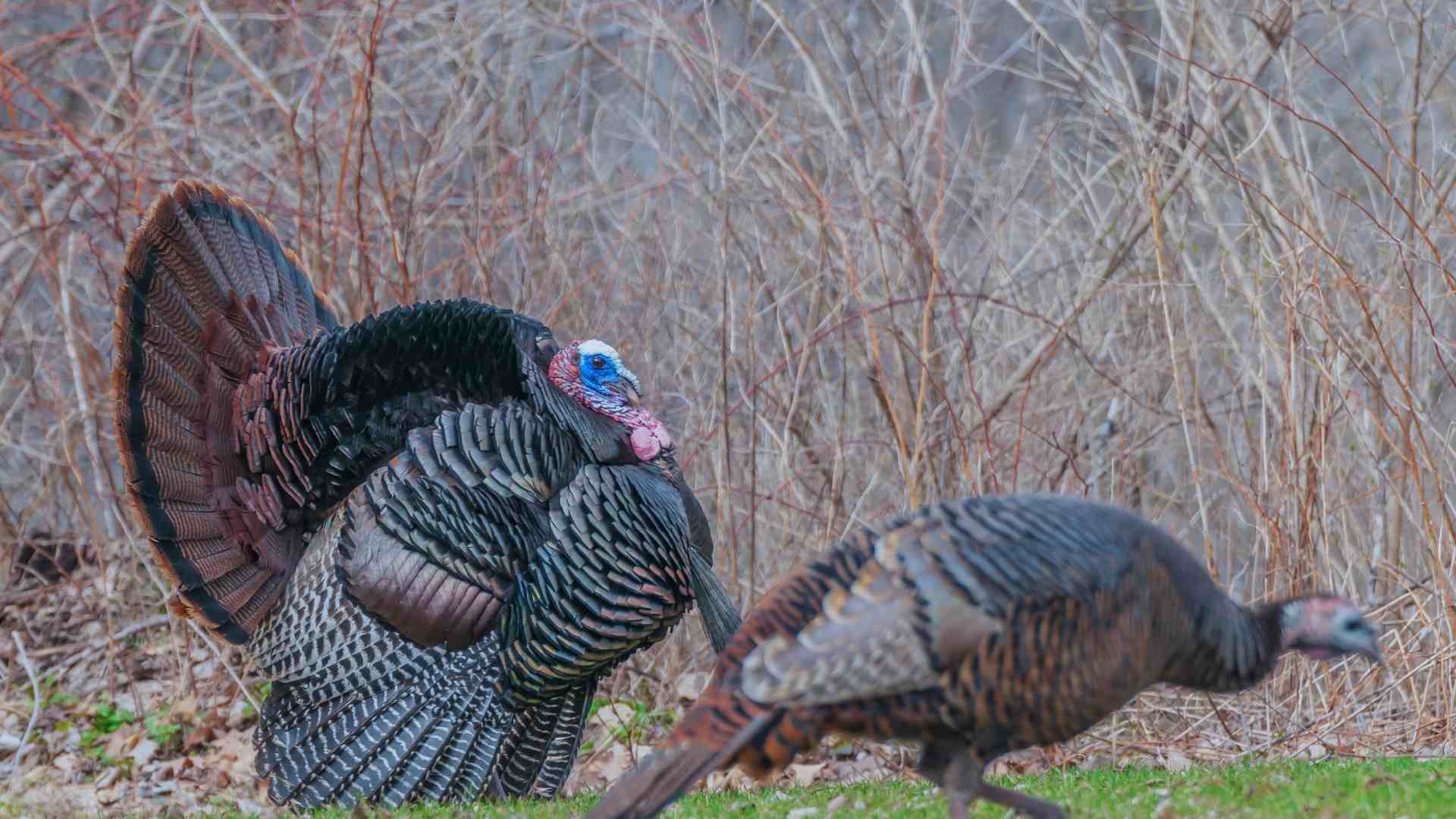There’s a lot of trial and error to master turkey calls. Your first attempts might not sound very natural or convincing-sounding if you’re new at it. You’ll need some time and practice to get good! In this article, you will learn all about turkey calls and how to use them to bring in those gobblers.
Contents (Jump to Topic)
ToggleIntroducing the Basic Turkey Calls
Yelps, Clucks, and Putts. These are the three basic calls you should know and master. Every turkey hunter should be familiar with the sounds of these turkey vocalizations. They are the most standard expressions of turkeys and can be used in various situations to bring in gobblers.
1. Yelp
The yelp is the sound that hens make when they call for a tom or get his attention. It is used by the hens on different occasions and can have different meanings – depending on the context. Yelping can be an aggressive sound, and it consists of multiple short notes that increase in volume.
2. Cluck
The cluck is made by both hens and toms (males) to call each other. It tells the other turkey that they’re insight and should come closer. It’s usually one or more short, abrupt notes. It is a good starter call for beginners to try to imitate. It almost sounds like someone clucking their tongue against the roof of their mouth.
3. Putt
The sound of a putt is one or more sharp notes that communicate alarm. It usually indicates the bird has detected something dangerous. If you see a bird within range and what him to stop, a putt sound will stop the bird and let it stand in attention.
Which Turkey Calls should a Beginner use?
Turkeys make various other sounds, but these three calls (yelping, clucking, and putts) are the basic sounds that will be most familiar to turkeys. Once you have mastered them well, try to learn about other sounds that turkeys make. Hunters usually utilize a variety of calls.
All-Purpose Calls
Yelps, clucks, and puts can all be used as all-purpose calls. They’re universal and can be used for a number of things.
Stick to the Basics
Stick to the basics before moving on to more advanced calls. You can learn to make different sounds for different occasions – especially when you’ve got your turkey call down to perfection.
Stick to yelps, clucks, and putts. You must master these three calls before moving on to more advanced stuff. Each of them serves a specific purpose in calling in a turkey, so you should know them cold.
Take your Time and Practice, Practice, Practice
When learning to make turkey calls, it’s essential that you take your time. These basic sounds are the foundation of all turkey calls, so you must get them down pat. Only then should you move on to more advanced calls.
Scouting before you Hunt
Scout the area and do some research on where to hunt. You should know which areas have a high concentration of turkeys so that you can increase your chances. Set up your ground blind in advance. That way, the turkeys can become accustomed to the presence of the blind.
Be Patient
Now, patience is a virtue in turkey hunting. It’s pretty standard for you to go out there and not be able to call any turkeys in. Maybe it’s just a quiet morning. Give it some time. Don’t get moving too fast – or you might run into the birds you just called and spooked them for good.
Sometimes turkeys just don’t gobble very much. However, if you know birds are in your area – If you see fresh evidence, such as tracks, droppings, or scratchings, or if you heard them gobble there previously – then maybe you just need to find the right call to get their attention!
read… what are a group of turkeys called
Camouflage
Turkey has good eyesight, and they can see colors like yellow, orange, and red. So try to camouflage yourself with the surroundings as much as possible – especially if you’re calling turkeys in a semi-open area where they could spot you more easily.
Turkeys have incredible eyesight. They possess all three cone classes that humans possess for full-color vision. When you hunt turkeys, your camo pattern matters, as do the colors that make up your pattern. In contrast, deer view all camo as shades of yellow.
They may not be able to smell, but they sure can see!
Avoid wearing bright colors, especially red, white, blue, or black, because these are the colors of a wild turkey gobbler.
Conclusion
The first step is knowing your basic turkey calls: yelps, clucks, and putts. These three sounds should give you enough variety that appeals to any tom or hen who’s within earshot. After mastering those basics, try out more advanced calls with different meanings depending on context. Scouting before hunting will help, too; it’ll let you know where turkey hotspots are located so that when it comes time for calling them in, you can be as effective as possible.






